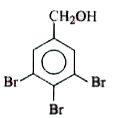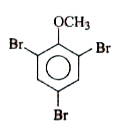The compound insoluble in aqueous NH3 is
Agl
AgCl
ZnSO4
HgCl2
The correct Answer is:A
To determine which compound is insoluble in aqueous NH₃, we will analyze each option provided.
1. Analyzing AgI (Silver Iodide):
- When AgI is treated with aqueous NH₃, it forms a complex: Ag+NH3→(Ag(NH3)2)++I−
- However, AgI is known to be insoluble in aqueous NH₃ and typically forms a yellow precipitate.
- Conclusion: AgI is insoluble in aqueous NH₃.
2. Analyzing AgCl (Silver Chloride):
- When AgCl is treated with aqueous NH₃, it forms a soluble complex: AgCl+2NH3→(Ag(NH3)2)++Cl−
- This complex is soluble in NH₃.
- Conclusion: AgCl is soluble in aqueous NH₃.
3. Analyzing ZnSO₄ (Zinc Sulfate):
- When ZnSO₄ is treated with aqueous NH₃, it forms a complex: ZnSO4+NH3→(Zn(NH3)4)2++SO2−4
- This complex is generally soluble in NH₃.
- Conclusion: ZnSO₄ is soluble in aqueous NH₃.
4. Analyzing HgCl₂ (Mercuric Chloride):
- When HgCl₂ is treated with aqueous NH₃, it forms a soluble complex: HgCl2+2NH3→(Hg(NH3)2)Cl2
- This complex, known as mercury amidochloride, is soluble in NH₃.
- Conclusion: HgCl₂ is soluble in aqueous NH₃.
Final Answer:
The compound that is insoluble in aqueous NH₃ is AgI (option 1).
---
- When AgI is treated with aqueous NH₃, it forms a complex: Ag+NH3→(Ag(NH3)2)++I−
- However, AgI is known to be insoluble in aqueous NH₃ and typically forms a yellow precipitate.
- Conclusion: AgI is insoluble in aqueous NH₃.
- When AgCl is treated with aqueous NH₃, it forms a soluble complex: AgCl+2NH3→(Ag(NH3)2)++Cl−
- This complex is soluble in NH₃.
- Conclusion: AgCl is soluble in aqueous NH₃.
- When ZnSO₄ is treated with aqueous NH₃, it forms a complex: ZnSO4+NH3→(Zn(NH3)4)2++SO2−4
- This complex is generally soluble in NH₃.
- Conclusion: ZnSO₄ is soluble in aqueous NH₃.
- When HgCl₂ is treated with aqueous NH₃, it forms a soluble complex: HgCl2+2NH3→(Hg(NH3)2)Cl2
- This complex, known as mercury amidochloride, is soluble in NH₃.
- Conclusion: HgCl₂ is soluble in aqueous NH₃.
The compound that is insoluble in aqueous NH₃ is AgI (option 1).
Similar Questions
Knowledge Check
Compound (A) C7H8O is insoluble in aqueous NaHCO3 and dissolves in aqueous NaOH and gives a characteristic colour with neutral FeCl3 . When treated with Br2 (A) forms compound (B) C7H5OBr3 .
The structure of compound (B) would be :A B
B C
C D
D
Compound (A) C7H8O is insoluble in aqueous NaHCO3 and dissolves in aqueous NaOH and gives a characteristic colour with neutral FeCl3 . When treated with Br2 (A) forms compound (B) C7H5OBr3 .
The most probable structure of compound A is :A B
B C
C D
D
Compound (A)C7H8O is insoluble in aqueous NaHCO3 and dissolves in aqueous NaOH and gives a characteristic colour with neutral FeCl3 . When treated with Br2(A) forms compound (B)C7H5OBr3.
The most probable structure of compound A is :
View SolutionA number of ionic compounds are insoluble in water. This is because
View SolutionAn organic compound 'X' with molecular formula C7H8O in insoluble in aqueous NaHCO3 but dissolved in NaOH. When treated with bromine water 'X' rapidly give 'Y' (C7H5OBr). The compound 'X' and 'Y' respectively are
View SolutionA white precipitate insoluble in conc HNO3 is formed when aqueous solution of X in NaOH is treated with barium chloride and bromine water .The X is
View SolutionAlumina is an ionic compound but insoluble in water because
View SolutionWhich of the following ppt is insoluble in NH3 solution ?
View Solution
